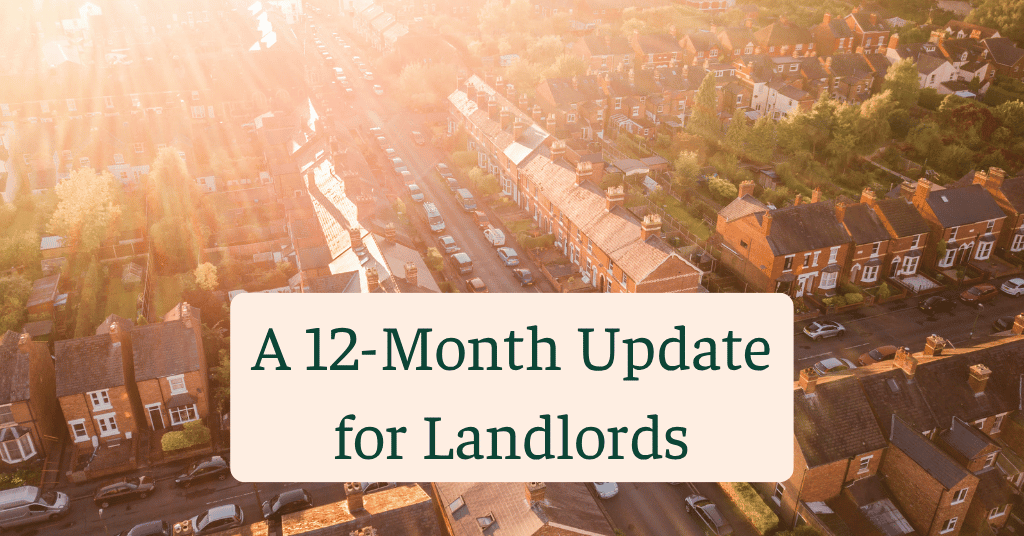A 12-Month Update for Landlords
It’s been another busy year (2025) in the private rented sector. If you’re managing a property right now, you’ll know just how much has shifted – from rising rents and tougher regulations to landlords reassessing their portfolios.
Here’s what you need to know about the market over the past 12 months and what it could mean for your next move.
- Rents Are Still Rising – But Not as Fast
- Landlords Are Selling Up – Supply Is Tightening
- The Renters’ Rights Bill – What’s Coming?
- Mortgage Rates: Slightly Lower but Still Squeezing Yields
- Tenant Affordability Is Under Pressure
- EPC Deadlines: Private Rented Sector Requirements
- What’s Next for Landlords?
Instant Rental Price Estimator
Discover your property’s true rental value in seconds with our free, UK-wide price comparison tool.
1. Private Rented Sector 2025: Rents Are Still Rising – But Not as Fast
Let’s start with some good news. The Private Rented Sector in 2025 shows average UK rents climbed 7% in the year to May 2025, according to the Office for National Statistics (ONS). That’s down from the 9% highs we saw at the end of 2024, but it’s still a solid increase. [footnote 1]
The average rent now sits at £1,287 a month. Zoopla says growth on new lets has slowed further to around 2.8%, and they expect annual growth to settle at about 3–4% this year. [footnote 2]
This cooling off isn’t a surprise – higher living costs and wage pressures mean tenants are hitting affordability ceilings. But demand is still outstripping supply in most areas.
2. Landlords Are Selling Up – Supply Is Tightening
Here’s the flip side. The number of properties available to rent is shrinking.
The latest RICS survey shows landlord instructions dropped for the 11th month in a row in June 2025, with a net balance of –21. [footnote 3]
And according to the National Residential Landlords Association (NRLA), 31% of landlords are planning to sell within the next year, with nearly a third saying they’ve already offloaded some stock. [footnote 4]
Why? Rising compliance costs, higher interest rates, and uncertainty over upcoming legislation are pushing many to reassess their investments.
If you’re thinking about expanding your portfolio, this could be an opportunity. Less competition often means stronger tenant demand for quality homes.
3. The Renters’ Rights Bill – What’s Coming?
One of the biggest changes on the horizon is the Renters’ Rights Bill, which is now making its way through Parliament:
✅ Section 21 “no-fault” evictions will be abolished. All Assured Shorthold Tenancies (ASTs) will become periodic, meaning no fixed end date.
✅ Section 8 grounds will be updated, giving landlords more defined routes for gaining possession (for example, if you want to sell).
✅ Tenants will gain stronger rights to request a pet, and you’ll need a solid reason to refuse.
The Bill has already cleared its Committee stage (May 2025) and is due for a final Lords vote in July. If passed, Royal Assent is likely in autumn, with changes coming into force in 2026. [footnote 5] [footnote 6]
This will change how you manage tenancies, so it’s worth getting ahead of it now.
4. Mortgage Rates: Slightly Lower but Still Squeezing Yields
After a brutal 2023 for buy-to-let investors, there’s been a little relief.
The Bank of England cut the Base Rate to 4.25% in May 2025, and held it there in June. [footnote 7]
But lenders remain cautious. Two- and five-year buy-to-let fixed rates are still averaging around 5%, according to Moneyfacts. [footnote 8]
If your current deal is ending soon, it’s worth shopping around early – and thinking about how these rates impact your cash flow.
5. Tenant Affordability Is Under Pressure
It’s not just landlords feeling the pinch. Tenants are struggling too:
⚠ Only 2.5% of rental listings are affordable for households on housing benefit. [footnote 9]
⚠ 43% of Universal Credit tenants and 24% of others were in arrears in March 2025; average arrears of £666. [footnote 10]
This is feeding into rising demand for rental homes with good energy efficiency and manageable running costs.
6. EPC Deadlines: Private Rented Sector Requirements
Despite rumours of a rethink, the government’s proposals remain:
📅 EPC C for all new lets by 2028.
📅 EPC C for existing lets by 2030.
💰 Fines of up to £30,000 per property for non-compliance. [footnote 11]
Savills estimates 2.9 million PRS homes need upgrades to meet these targets. [footnote 12]
Starting early could save you money and stress later.
7. What’s Next for Landlords?
The next three months look set for more of the same: high demand, low supply, and modest rent increases. RICS says 24% of agents expect rents to rise further by autumn. [footnote 13]
But with legislation and interest rates in flux, the market feels unpredictable.
Need Help Staying Ahead?
At LettingaProperty.com, we’re here to take the stress out of letting. Whether it’s:
✔ Navigating regulatory changes
✔ Reviewing your rents
✔ Planning for EPC upgrades
Our team can help you keep your portfolio compliant and profitable.
Contact us today to talk about how we can support you.
1. ONS Private Rental Prices, UK: June 2025
2. Zoopla UK Rental Market Report – June 2025
3. RICS UK Residential Market Survey – June 2025
4. NRLA – Record Numbers of Landlords Selling Up
5. Gov.uk – Guide to the Renters’ Rights Bill
6. Parliament – Renters’ Rights Bill 2025: Explanatory Notes
7. Bank of England Monetary Policy Summary – May 2025
8. Moneyfacts Buy-to-Let Rates – July 2025
9. Crisis – Affordability Analysis 2025
10. National Housing Federation – Rent Arrears and Universal Credit
11. BEIS Consultation – Improving Energy Performance in PRS
12. Savills – PRS Homes Needing EPC Upgrades
13. RICS UK Residential Market Survey – June 2025



